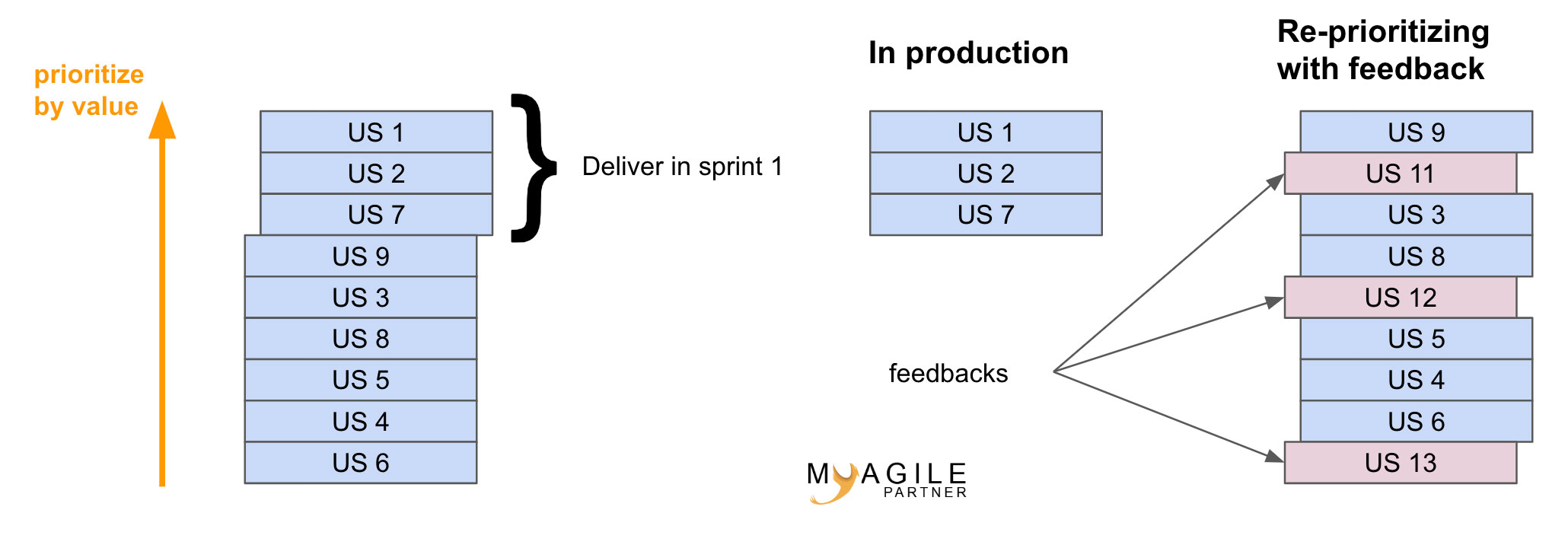
It’s very interesting to deliver our user-stories with the Value Driven-Development (VDD) concept. I will explain you in this article what is this concept of Value Driven-Development.
Value Driven-Development (VDD) to deliver
The agile manifesto remember us : “Our highest priority is to satisfy the customer through early and continuous delivery of valuable software.”. And in Value Driven-Development, we try to deliver a maximum of values as soon as possible.
The team will try to follow this curve where it deliver a maximum of values as soon as possible. The team will live a running-in phase at the beginning to setup environment, to create interaction between people, to create the framework…

How to prioritize in Value Driven-Development?
The team is agile and it works by small lot (user-stories). These user-stories have to be INVEST because the Value Driven-Development (VDD) works only with independent items.
Determine the business value
Each user-story will have a business value determined by the product owner with the help of users (or key users). We will use the scale 100 to 1000 to give a business value at each user stories.
For example: user-story 1 = 900 BV – user-story 2 = 200 BV
Determine the effort of development
But it’s not sufficient to deliver a maximum of values as soon as possible with business value because the effort of development will have a real impact on the prioritization.
So, we will determine the story points of each user story in the Value Driven-Development concept. For that, we will use the fibonacci numbers: 1, 2, 3, 5, 8, 13.
For example: user-story 1 = 13 SP – user-story 2 = 2 SP
What is a story point?
The story point of a user story (or a technical task) will include different notions that developers will have to take into account to estimate it:
- the effort to develop the request
- the difficulty (complexity) of the request
- the risks we imagine to meet during the development of the request
- any unknowns existing at the time of the estimate
- potential dependencies with external elements
We must accept that the point of effort is an “abstract” notion that can’t be compared to a number of man days. But it allows to make predictability.
Yes, the point of effort takes a notion of time contrary to what we can read sometimes. But his estimate isn’t just based on it and this notion of time is not materialized by 1 story point = 1 day.
Calculate the ROI (return on investment)
When we have the business value and the story point for each user-story, we can calculate the ROI (return on investment). It’s this indicator that help us to prioritize in doing Value Driven-Development (VDD).
Here is the method to calculate the ROI:
ROI = BV / SP
It’s very easy to calculate it. And each user-story will have its ROI.
Now, you have the best element to prioritize by the value your backlog. So, the product owner will range the user-stories by ROI

The product owner will prioritize again the backlog with the new user-stories created from user feedbacks; sometimes the feedbacks will have a very important ROI for the product and could change the prioritization of the backlog.
Conclusion Value Driven-Development (VDD)
I like this method of Value Driven-Development to deliver our user-stories because it’s a very good way to have the most important feedback as soon as possible. The Value Driven-Development (VDD) concept is very interesting for the product owner.
Indeed, you can mix Value Driven-Development and the MMF (MMP) concept to prioritize your backlog by release.
Usefull link : Scrum : introduction au scrum




3 Trackbacks / Pingbacks